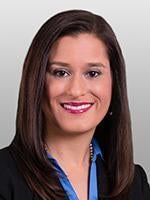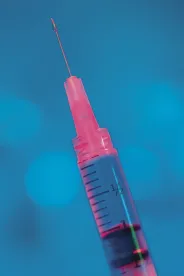Earlier this month, the United States Patent and Trademark Office (“PTO”) issued an update to its Interim Guidance on patent subject matter eligibility under 35 U.S.C. § 101. The May 2016 update is the latest in a series of guidance documents regarding subject matter eligibility issued by the PTO over the past two years. It not only provides additional general guidance on subject matter eligibility, but also helpfully contains a series of new hypothetical examples (often based on actual cases) illustrating the application of the subject matter eligibility analysis to claims directed to life science technologies.
The May 2016 update contains life sciences examples (see Subject Matter Eligibility Examples: Life Sciences) that relate to:
-
Vaccines
-
Diagnosing and Treating Julitis
-
Dietary Sweeteners
-
Screening for Gene Alterations
-
Paper-Making Machine
-
Hydrolysis of Fat
The PTO’s May 2016 update includes the life sciences examples noted above, the PTO’s memorandum to the Patent Examining Corps, an index of all 33 subject matter eligibility examples, and a summary of the case law addressing subject matter eligibility, all of which can be found here.
We highlight below two of the new examples that provide insight regarding the application of 35 U.S.C. § 101 to medical device claims.
Example 28 (Vaccines)
Claim 7 of Example 28 (Vaccines) claims “a vaccine delivery device comprising a microneedle array coated with a vaccine comprising Peptide F.” In providing background for the example, the PTO describes this microneedle array and its advantages: “A coated microneedle array comprises a plurality of very small solid needles (e.g., less than 0.05” long) that are coated with a vaccine formulation, which is placed against a patient’s skin to administer the vaccine into the skin (transcutaneously). Because the microneedles are very small, administration of a vaccine with a microneedle is virtually painless.” The example further explains that “at the time the application was filed, it was routine and conventional in the field to use syringes, but not coated microneedle arrays, for vaccine delivery.”
The example concludes that the Peptide F of the claim is a “product of nature” that does not display markedly different characteristics compared to the naturally occurring counterpart. However, the delivery device saves the claim from ineligibility under 35 U.S.C. § 101. As the example explains, “the claim’s recitation of a microneedle array coated with the peptide is an application of the [“product of nature”] with a particular manufacture that is not a conventional delivery device, and thus is more than a mere instruction to ‘apply’ the peptide [] using a well understood, routine or conventional device in the field.” Thus, the inclusion of the coated microneedle array produces a claim that, as a whole, amounts to significantly more than the product of nature itself. Claim 7 of Example 28 thus demonstrates the eligibility of novel delivery devices.
Example 32 (Paper-Making Machines)
Example 32, which discusses the example of a paper-making machine, does not at first glance appear to fit within the life sciences category. However, the paper-making machine of Example 32 is used to illustrate a claim to a machine that operates using a law of nature, in this case gravity.
The claim of Example 32 recites: “A Fourdrinier machine having a breast-roll end of a paper-making wire maintained at a substantial elevation above level, whereby stock is caused to travel by gravity, rapidly, in the direction of movement of the paper-making wire, and at a speed approximately equal to the speed of the paper-making wire.” As the example explains,
although the machine operates using gravity, which is a law of nature, the claim clearly does not seek to tie up this law of nature so that others cannot utilize it. In particular, the claim’s recitation of a Fourdrinier machine (which is understood in the art to have a specific structure …) that is arranged in a particular way to optimize the speed of the machine while maintaining quality of the formed paper web makes it clear that the claim as a whole would clearly amount to significantly more than any recited [law of nature].
Accordingly, “the claim clearly amounts to significantly more than the mere use of gravity by providing meaningful limitations to the law of nature and additionally improving paper-making technology.” Example 32 suggests that, if claiming a medical device that employs a law of nature, one may be able to add meaningful limitations to a law of nature through structural elements that will render the claimed invention subject matter eligible.
The updated guidelines are a useful resource for applicants drafting and amending claims and responding to 35 U.S.C. § 101 rejections, and reflect the PTO’s current thinking on how to apply 35 U.S.C. § 101 to life science technologies.




 />i
/>i
